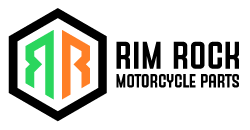 Loading... Please wait...
Loading... Please wait...Blog
Triumph Daytona 675, 675R Exhaust Servo Code
Posted by Jeremy Decker on 18th Mar 2014
In this article we will discuss the Triumph Daytona 675 and 675R fault code system, code clearing, and how it is impacted by the exhaust servo system.
In most current sportbikes, codes are set and cleared in real time, meaning if a fault is detected, a code is set, and as soon as the fault is fixed, the code disappears. Codes are normally only displayed via a dash light (FI light), and may or may not be available to the dealer on a communication bus. However, Triumph is a little different. The Triumph ECU (engine control unit) uses an OBD2 interface just like most cars. These systems are much more complex but offer some distinct advantages to the manufacture, and some disadvantages to the owners.
Dealers love these systems because it offers real time datalogging, code storage for later review, and easy reprogramming functionality. Owners may find these systems difficult to understand, and not DIY friendly, often times without special equipment it can be impossible to work on these motorcycles. The good news is more and more owners are joining forces to develop inexpensive DIY tools for accessing the OBD2 communications bus. When a fault is detected the Triumph motorcycles will illuminate a fault indicator on the dash like most other bikes, however, that code is also written to the ECU memory. Fixing the problem will not immediately clear the fault light or stored code! In fact, that code will remain stored until cleared by the dealer. The good news is the fault light will eventually turn off again after the problem is resolved and the bike is brought through about a dozen run cycles without the fault returning. (A run cycle means the bike was started, brought to operating temperature, and then shut down.)
Ok, so that's the OBD2 system on your Triumph, but what exactly is the exhaust servo and why is it a problem? Well for that we've already written a pretty extensive article, it can be found here: http://www.shopskutr.com/blog/exhaust-valves-and-servo-motors-explained/
So, what does all this mean with respect to the exhaust servo, and the Servo Buddy? Well, a best case scenario would be you purchase and install a new exhaust system and the Servo Buddy at the same time. The bike did not have any fault codes before the install, and then since the Servo Buddy was added at the same time as the exhaust servo was removed, it would continue not having any fault codes after because the Servo Buddy would exactly mimic a working servo motor system from the stock exhaust. The motorcycle would have no way of knowing anything was different. However, if the exhaust system was installed (or the servo removed) and the bike was started WITHOUT the Servo Buddy installed, the code would be set, and then, even after installing a Servo Buddy the code would remain on for about a dozen run cycles and an exhaust servo fault code would be stored in the ECU until the dealer clears it for the reasons described above. Good practice would then be to go to the dealer and have the code cleared with the factory tool.
This might sound a bit complex at first but really it's not too bad once you understand how and why codes are set, and the procedure for clearing them. These systems are in place so that if a fault occurs the dealership has a way of seeing the problem that occurred even if it was an intermittent problem. In the long run these types of systems will probably take over the motorcycle market among all brands of motorcycles. It saves the dealer techs time trying to diagnosis problems, and can prove you're not crazy when the bike has an intermittent issue! We personally hope these systems become more widely accepted in the Japanese brands and more DIY tools are developed for the owners to gain access to the bikes features.
If you are interested in purchasing a Servo Buddy for your Triumph we do have them available in our online store http://www.shopskutr.com/servo-buddy/. If you have any questions, please feel free to contact us, I hope you found this blog informative and useful.
How to best mount a camera to your motorcycle
Here at SkutrNet we believe that we have come up with the ideal method for mounting a camera to a motorcycle, whether it be a sportbike with fairings, a cruiser, naked, or standard bike. In all instances the absolute best video quality and camera position is where the factory mirrors would mount. There are a [...]
Exhaust valves and servo motors explained
What does an exhaust servo motor do?An exhaust servo motor is one component of the exhaust valve system (sometimes called the ex-up or power valve system) found on almost every modern sportbike including all Honda, Kawasaki, Yamaha, Suzuki, BMW, Ducati, Triumph and a few others. The system consist of a few parts, the first is [...]
